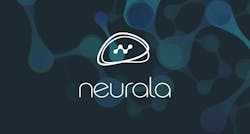Machine learning (ML) is a broad topic within the realm of artificial intelligence (AI). One of the more popular ML technologies is deep neural networks (DNNs), which have driven FPGA and GPGPU adoption in the cloud to support training requirements that demand more processing power than when utilizing ML models for chores such as inference.
Spiking neural networks (SNNs) is another ML approach that doesn’t have the same performance requirements as DNNs. However, it trades off the ability to do training with the same hardware requirements as doing inference.
Of course, trying to figure out where all of the ML technology fits is a challenge on its own, since there are a variety of implementations and approaches. A great deal of the ML technology is open source and available for examination, but quite a few instances are closed and proprietary, making classification more difficult. On the flip side, as long as they deliver what the vendor promises, then it can be useful in dealing with the ML black box.
Neurala’s Lifelong-DNN technology fits in this space. It works well, but developers will not be getting into the code. Instead, they can take advantage of the runtime and the Brain Builder training interface (see figure).
Neurala’s Brain Builder makes it easy to train models using images.
Lifelong-DNN is in a class by itself. It doesn’t use conventional back propagation. Instead, it leverages an approximation of a lightweight back propagation that needn’t retain the learned images when learning new objects. Like SNN, part of the price in easier training is more limited precision and recognition rates compared to a conventional DNN. It does enable Lifelong-DNN to be on a software-only platform such as the Raspberry Pi for both learning and inference.
Though DNNs may have better recognition rates, they’re only as good as the training done to the point where they’re deployed. This is because of the high storage and compute requirements necessary to do learning in the field.
Also keep in mind that none of the ML systems are designed to deliver 100% recognition, although they can come close. The difference between Lifelong-DNN and conventional DNN will vary, but the difference tends to be a fraction of the overall recognition rate. Many Lifelong-DNN models recognition rates are well above 90%.
As with many ML systems, Neurala will initially target image recognition. However, the technology can be applied to a range of data. An iOS app is available to evaluate the system.
About the Author
William G. Wong
Senior Content Director - Electronic Design and Microwaves & RF
I am Editor of Electronic Design focusing on embedded, software, and systems. As Senior Content Director, I also manage Microwaves & RF and I work with a great team of editors to provide engineers, programmers, developers and technical managers with interesting and useful articles and videos on a regular basis. Check out our free newsletters to see the latest content.
You can send press releases for new products for possible coverage on the website. I am also interested in receiving contributed articles for publishing on our website. Use our template and send to me along with a signed release form.
Check out my blog, AltEmbedded on Electronic Design, as well as his latest articles on this site that are listed below.
You can visit my social media via these links:
- AltEmbedded on Electronic Design
- Bill Wong on Facebook
- @AltEmbedded on Twitter
- Bill Wong on LinkedIn
I earned a Bachelor of Electrical Engineering at the Georgia Institute of Technology and a Masters in Computer Science from Rutgers University. I still do a bit of programming using everything from C and C++ to Rust and Ada/SPARK. I do a bit of PHP programming for Drupal websites. I have posted a few Drupal modules.
I still get a hand on software and electronic hardware. Some of this can be found on our Kit Close-Up video series. You can also see me on many of our TechXchange Talk videos. I am interested in a range of projects from robotics to artificial intelligence.



